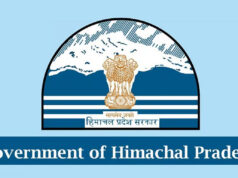Shimla: Even after the Himachal Pradesh government cabinet decision to reintroduction of the Old Pension Scheme, the state government has failed to come out with a final blueprint for the scheme. The Old Pension Scheme was the centre of the discussion even before the assembly election in 2022. After failing to get the desired response from the previous government, agitated employees even protested the state capital and gathered in thousands during the Vidhan sabha sessions demanding the reintroduction of the pension scheme and demanding MLAs to stripe with the benefits if failed to give benefit to the employees. Upon which then Chief Minister dared employees to contest the election for the pension benefits.
Sensing the opportunity to get back into power in the state, the Indian National Congress promised to implement the scheme if elected to power and on the line of promise, the party even gave a nod to the scheme in the first Cabinet meeting. However, after that, nothing significant has been done so far.
What is Old Pension Scheme
The old pension scheme, also known as the Defined Benefit Pension Scheme, was a retirement benefit plan where an employee is entitled to receive a fixed pension amount after retirement, which is based on a formula that takes into account the employee’s length of service and last drawn salary.
Under this scheme, the employee contributes a fixed percentage of their salary towards their pension, and the employer also contributes an equal amount. Upon retirement, the employee is entitled to receive a pension for the rest of their life, which is typically indexed to inflation to account for the rising cost of living.
Introduction of New Pension Scheme
The old pension scheme was replaced by the New Pension Scheme (NPS) in 2004, which is a defined contribution pension scheme. Under the NPS, the employee contributes a fixed percentage of their salary towards their pension, and the employer also contributes an equal amount. However, the pension amount is not fixed and is dependent on the amount of corpus that is accumulated at retirement. The corpus is invested in various financial instruments, and the returns are determined by the market performance of these instruments.
Challenges in implementing Old Pension Scheme in Himachal Pradesh
Financial burden: The old pension scheme is a defined benefit scheme, which means that the government will have to bear the entire cost of the pension payments. This could put a significant financial burden on the state government, especially in the long run, as the number of pensioners increases.
Administrative challenges: The implementation of the old pension scheme requires a robust administrative system to manage pension payments, track pensioners, and maintain records. The state government may need to invest in technology and infrastructure to ensure efficient implementation of the scheme.
Resistance from employees: The new pension scheme has been in place for a few years, and some employees may resist the switch to the old pension scheme. This could lead to legal challenges, protests, and disruptions in the implementation of the scheme.
Legal hurdles: The implementation of the old pension scheme could face legal hurdles if it is found to be in violation of any existing laws or regulations. The state government may need to seek legal opinion and make necessary amendments to ensure the legality of the scheme.
Adequacy of pension: The old pension scheme provides a fixed pension, which may not be adequate to meet the increasing cost of living, especially for those retiring in the future. The state government may need to review the pension amount periodically to ensure that it remains adequate.
Sustainability of the scheme: The old pension scheme is based on the pay-as-you-go model, which means that the contributions from the current employees fund the pension payments. As the number of pensioners increases, the sustainability of the scheme could be at risk, and the state government may need to explore options to ensure the long-term viability of the scheme.











